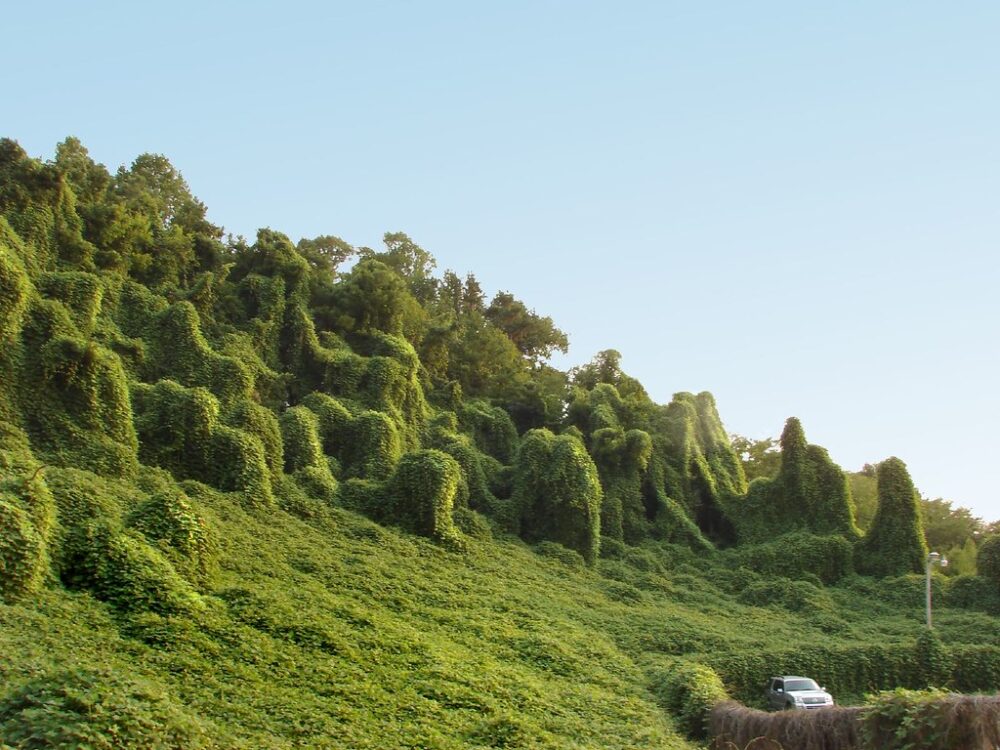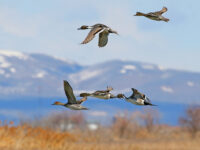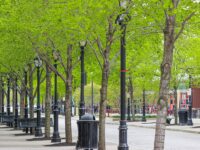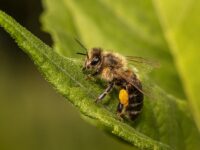After a long day of exploring the lush jungles of Guam, you and your adventure buddies relax in the shade of a native coconut palm tree. Suddenly you hear a slight rustle of leaves in the canopy above. Fearing the worst, your eyes dart upwards in frantic search of the abundant, ill-famed brown tree snake that dwells in the tree canopy. Thankfully, you detect no snakes but spot small flecks of red that seem to float in the distance. Little do you know, you and your friends are about to witness one of the strangest conservation efforts of all time.
The brown tree snake (Boiga irregularis) was accidentally introduced to Guam by the U.S. military in the 1950s. The mildly venomous semi-constrictor snake was most likely brought to the island as a stowaway on a U.S. cargo shipment. Native to Australia, Papua New Guinea, and the Solomon Islands, the brown tree snake has had no natural predators in Guam and thus began prolifically reproducing shortly after its introduction. Since then, this invasive species has wreaked havoc on the economy and ecology of the island, driving 10 of 12 native bird species to extinction and outcompeting other predators for resources. According to the United States Geological Survey, the snake is also known to crawl on electrical lines and cause pernicious power outages. To control the spread, the USDA Wildlife Services came up with an unconventional plan. Though equivalent to a single child’s dose of Tylenol, 80 milligrams of acetaminophen is enough to kill an adult brown tree snake. After they drugged dead mice as bait, conservationists attached the rodents to biodegradable parachutes and released them from planes above the jungle. The parachutes full of acetaminophen-laden mice landed in the trees where they were ingested by the arboreal snakes, killing many within as little as 24 hours.
The majority of invasive species are introduced by humans.
Most of history is characterized by coevolution. Plants, animals, and microorganisms evolve alongside each other until they reach a delicate balance. Healthy ecosystems have limiting factors — variables within an environment that limit or control the range of other species (i.e., climate, predators, or food availability). Having evolved under a different set of limiting factors, a novel species can cause devastation in a new environment. Because these species often thrive in new environments because of their resilience, fending them off can seem like an unconquerable challenge.
The people who suffer most from their devastating effects are farmers and those who depend on the health and abundance of biodiverse natural resources to make a living.
The majority of invasive species are introduced by humans. The Kudzu vine, or “the vine that ate the south” was brought to the southern United States by European settlers for porch decoration and cattle feed. Kudzu has since become one of the most notorious invasive plants, killing native shrubs, groundcover, and even trees by outcompeting them for sunlight. In its native ecosystems of Japan and southeast China, the vine grows modestly, controlled by cold winters and feeding insects. In the balmy climate of the South, however, Kudzu grows unchecked, transforming once biodiverse landscapes to a monolith of ivy-like towers.
Invasive species cost the global economy $1.4 trillion each year, according to the Centre for Agriculture and Bioscience International (CABI). Though invasive species threaten ecosystems everywhere, the people who suffer most from their devastating effects are farmers and those who depend on the health and abundance of biodiverse natural resources to make a living. But this isn’t just an agricultural problem, it’s a major deterrent for community development. CABI estimates that approximately 70 percent of schoolchildren miss school during peak weeding times to manually remove invasive plant growth in agricultural fields. A team at the University of Tennessee indicates that invasive mammal species are responsible for 58 percent of bird, mammal, and reptile extinctions worldwide and categorize this problem as a “global conservation priority.” This wreaks havoc on those who rely on hunting native species for sustenance. Similarly, invasive water plants like the water hyacinth and species of the Prosopis genus can increase freshwater loss by up to threefold and deplete underwater oxygen levels, killing aquatic species that people rely on to survive.
Invasive species cost the global economy $1.4 trillion each year.
This is a human problem; we cannot deny our dependence on natural resources and our role in their destruction. Unchecked, invasive species threaten our food and water sources, as well as the ecosystems we need and love. Ultimately, the best method of control is prevention, accountability, and awareness. There is one species, however, that threatens ecosystems more than any other. It has caused irreversible environmental damage and initiated mass extinctions of countless species — could humans be the most invasive species of them all?
Image Source: Flickr






